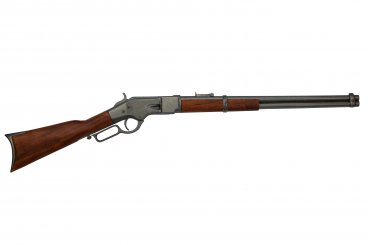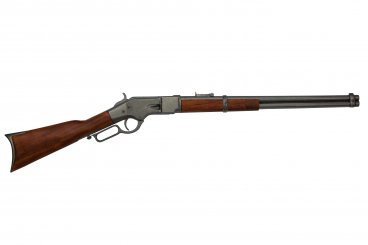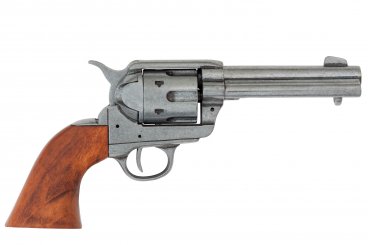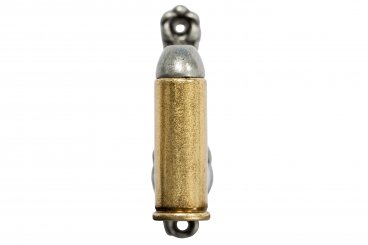Carbine Mod. 66, USA 1866.
Reproduction of a carbine, made of metal and wood, with simulated loading and firing mechanism.
The Model 1866 was nicknamed "Yellow Boy" due to its "brass" receiver (in fact it was made of a type of bronze called gunmetal); It was a repeating carbine with lever action, that is, it allowed several shots to be fired before reloading, ejecting the used cap and replacing it with a new one by operating a lever attached to the trigger guard; hence the term "repeating rifle".
Its operation consisted of a horizontal movement closure that had the needle in line inside; When the lower lever was actuated, it unlocked the lock, then moved it backwards, uncovering the breech, giving space to a lifting tile and mounted the striker from behind. At the end of its backward travel, the latch caused a bullet to travel from the magazine to the lifting tile, and then the reciprocal forward movement of the lever raised the tile putting the bullet in front of the chamber, towards where it was pushed in. battery by the closure. The last upward stroke of the lever again blocked the latch in the firing position.
Nelson King's new improved patent represented a remarkable improvement over the old Henry, he was famous for his sturdy construction and functionality. The introduction of this first carbine caused a sensation among the cowboys or "cowboys", law enforcement officers, trappers, settlers, Indians, etc. Additionally, the popularization of Mod. 1866 opened a technological gap between the American conquerors and the native warriors who fought for their independence during the last phase of the Indian Wars.
Recreate the American western with the historical reproduction of this DENIX carbine, a weapon highly appreciated by historical reenactors and weapon collectors!
Mostrar
Reference 1140/G
Dimensions:
100 cm
Weight:
3,000 g
Country of manufacture:
![]()
Epoch:
Western and American Civil War 1861-1899
Type Collectible:
Rifles & carbines




























